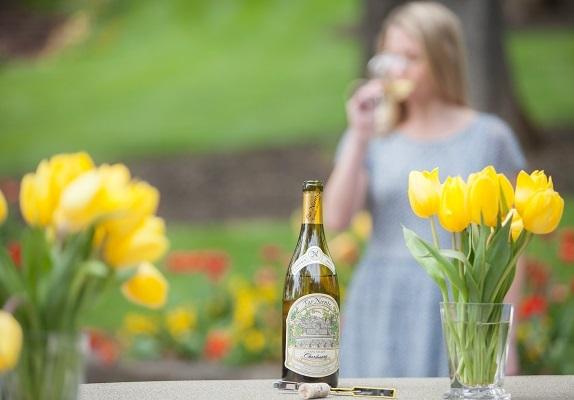Non-Malolactic Fermentation and the Far Niente Chardonnay House Style

Non-malolactic fermentation. Although the phrase doesn’t roll easily off the tongue, Chardonnays made without it certainly can. And it’s essential to our Far Niente Chardonnay house style.
In 1979, when we bottled our very first wines, we decided to forego malolactic fermentation in our Napa Valley Chardonnay. It’s been a part of our house style that we’ve refined ever since.
If you’re not familiar with the phrase, malolactic fermentation (ML) is a secondary fermentation that occurs in wine. It can occur after or in tandem with a wine’s primary fermentation (aka, the process of turning sugar into alcohol that all wines undergo). As its name implies, malolactic fermentation is the conversion of naturally occurring malic acid found in grapes to lactic acid. Most red wines, including Far Niente Cabernet, undergo this conversion. In addition, certain strains of malolactic bacteria (the little guys responsible for this fermentation) can produce a byproduct, diacetyl, that contributes the buttery aromas and flavors found in many Chardonnays.
Below, Far Niente Winemaker Nicole Marchesi talks about why we prefer to make our Napa Valley Chardonnay without ML:
“Our Chardonnay vineyards are planted in the southern Napa Valley appellation known as Coombsville. It’s a magical pocket for Chardonnay, with sloping hillsides, cool foggy mornings and warm days in the summer. As the fruit ripens from veraison (when the grapes start to soften) onwards, sugars are accumulating and acids are dropping. Along with flavors and sugar level, acidity levels also play an important role in pick decisions; at harvest our malic levels are already in the range we want to be. Knowing our vineyards and fruit as intimately as we do, we understand the benefits non-malolactic fermentation can have on our wines. We have three main reasons for blocking malolactic fermentation in our Far Niente Estate Bottled Chardonnay.
- First, it allows us to retain the fruit’s natural acidity, which gives our wine that refreshing, juicy finish that leaves you craving another sip. That natural acidity also allows our white wines to age beautifully and makes them super food friendly.
- Second, foregoing malolactic fermentation allows us to get more vineyard-driven aromas and flavors. I know the word terroir is often over-used, but in this instance, non-malolactic fermentation helps us preserve the flavors and characteristics that are truly unique to our vineyards.
- Third, by choosing not to put our Chardonnay through malolactic fermentation, we are able to showcase the incredible textures that we get from our own proprietary clone of Chardonnay. The Charlemagne clone comes from vine cuttings that the vintners in Burgundy shared with us nearly 30 years ago. This special clone gives the midpalate of our Chardonnay a magnificent creamy-mineral quality. We don’t need malolactic fermentation to overshadow or compromise this unique – and incredibly delicious! – texture.
Although foregoing malolactic fermentation in our Chardonnay is essential to our house style, there are Chardonnay-growing vineyards and wine regions across the globe that benefit from malolactic fermentation. For example, in cooler areas like Burgundy, where grapes can often have an extremely high acidity, malolactic fermentation can actually bring the wines into better balance.”
Pushing pause on malolactic fermentation is just one of a number of factors that influences our house style for Far Niente Chardonnay. As Far Niente President Larry Maguire says, “People often ask me what it is that makes our Far Niente Chardonnay so special. It’s not one thing; it’s a thousand things.”
AND
Discover our Current Release and Cave Collection Chardonnays.
More Articles

The House of Far Niente: Napa Valley’s New Collective
Read Article

2 min read
Bella Union: A New Chapter in Napa Valley’s Storied Elegance | Fodor's Travel
Read Article

2 min read
Bella Union Artist in Residence: Where Wine, Art, and Napa Valley Meet
Read Article